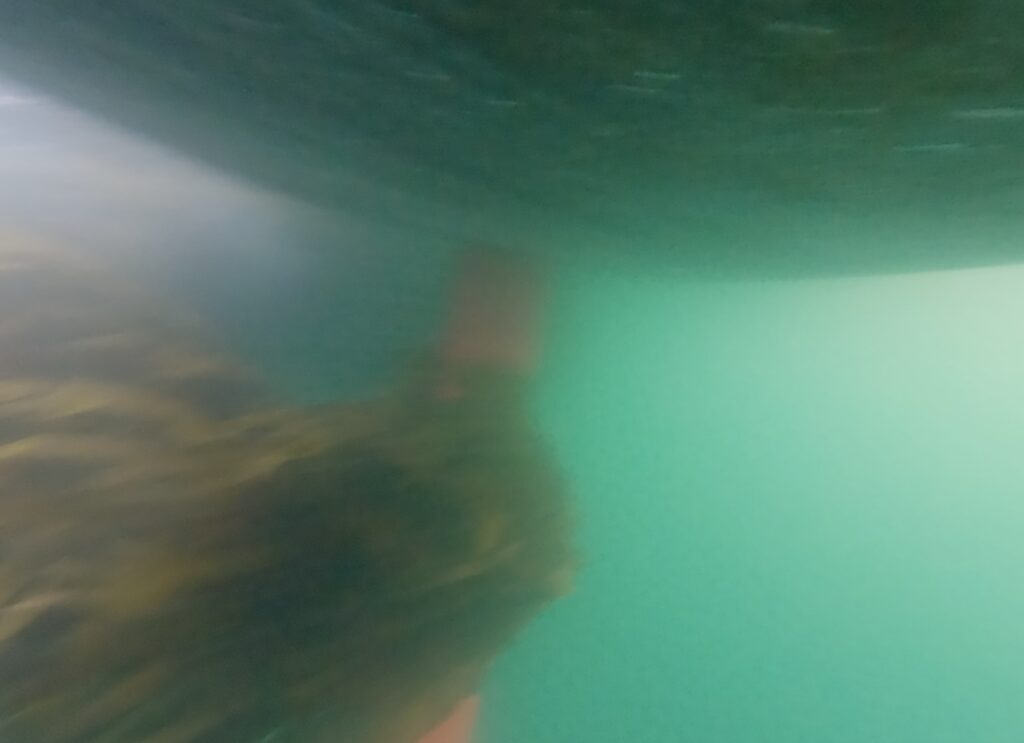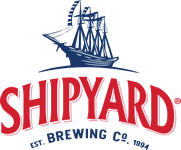More than a week since rounding the infamous Cape Horn, I find myself slowly climbing up an Atlantic Ocean that has been very unkind to me and to Shipyard Brewing. I say this not to complain or to say ‘poor me’, but in the context of writing in this blog or in reflecting on this race, it has now definitely become a part of my journey. The South Atlantic Ocean has been extremely unkind to me. Even when rounding the Horn, I muted my celebrations because I knew I was going to be facing something that no one else in this race has faced; a huge 40+ knot northerly shortly afterwards. That blow has now become a general theme in my ascension of the Atlantic. Perhaps I will celebrate my Horn rounding when I finally reach the Trades and escape this cruel and dreadful place.
Cape Horn itself certainly lived up to the full expectation. About a week out from Cape Horn I faced two massive southerlies which forced me to crack off and make some northing when I didn’t particularly want to. After that, I had mostly reasonable westerlies which allowed me to make good progress to the Horn, but the Southern Pacific Ocean had one last challenge in store. A depression coming down from the northwest rapidly evolved and intensified – changing at every forecast – until it met me right at Cape Horn. There was really no way to avoid it. I tried speeding up to get to the Horn in front if it, and I contemplated slowing down. But in the end, you can’t control nature, and Shipyard Brewing and I were simply destined to meet a storm at Cape Horn. My weather router Jason and I made a plan to keep me in deep water and also away from the coast with two goals in mind; the breeze compresses at the coast, so if we were about 70 miles off the coast, we would see 10 or 15 knots less pressure. Also, by being 70 miles offshore I stayed just off the shallow part of the continental shelf and remained in about 3,000 – 6,000 feet of water which would hopefully keep the waves from breaking dangerously.
For the most part, our strategy worked perfectly. Approaching under 3 reefs and a storm jib, the wind kept building and building until it peaked with breeze that was solidly in the mid-40s and had a maximum gust of 57.8 knots. The seas predictably built to impressive levels. Awe inspiring stuff to experience the wind and the seas of Cape Horn in a full gale. Huge breaking waves with long white streaks from the strong winds. Smoke on the water, as water gets vaporized off the wave tops in that much wind. Dropping the mainsail and even un-pinning the head board (the square top), I rounded Cape Horn under just a storm jib and still saw a maximum surf of 21.7 knots of boat speed; one of my higher speeds of the whole race. As soon as the blow passed, the breeze began to moderate and I spent a relatively peaceful few hours that night relaxing. At first light, I struggled greatly, but managed to get the head board re-pinned in 25-30 knots and big, sloppy seas. Turning north, I gradually added sail until we were nearly becalmed that afternoon. With following winds mostly from the southwest, I aimed for the Le Maire Strait and passed through it with plenty of current aiding me. It is extremely critical to time the tides with a crossing of the Le Maire Strait. The easy way I figured out to time the tides is that when the tide goes up, it pushes you up (north), and when the tide goes down, it pushes you down (south). Fortunately, I was on a rising tide and had a big push in my favor.
Downwind through the Le Maire Straits at a high speed (due to the current), I gybed northwest and headed towards the Argentinian Coast. A huge northerly was forecast to blow through the area; a byproduct of a low-pressure sweeping over the continent. I originally thought to perhaps sail behind the Falklands and seek shelter, or even anchor, but options were limited and the shallowness of the waters around the Falklands, and the sheer power of this northerly blow meant that I just wanted nothing at all to do with it. The models were showing sustained upper 30s to 40s, gusting in the upper 50s to 60, dead upwind. By heading towards the coast, I was able to basically meet that blow as it came over the continent and it would therefore pass over me much more quickly and with a couple of points of land sticking out from the continent, I would be able to seek some relative shelter from the seas. I would also see much less wind at that location than if I were out in the open. To the downside, the wind along the coast is EXTREMELY gusty and shifty as it comes from the west and gets filtered through the Andes Mountains. These winds are notorious for gusting wildly and then dropping down to nothing, something I got a small taste of. As soon as the blow was passed, I wanted to leave the coast ASAP.
While I certainly lost plenty of time to my competitors, I critically managed to get through this weather without too much wear and tear on the boat or the skipper. With three reefs and a storm jib, I tip-toed through the strong northerly winds and then tacked back to port and began going east-northeast again. Right after that, another huge northerly system was rolling through and I remained upwind as long as I could, and then right as it became too much, I cracked off. Fortunately, this was well time with the passage of the front as the wind shifted to the northwest and then west. When the wind went northwest that morning, I saw a maximum of 56 knots of pressure, while still being on the Patagonian shelf that extends from South America to the Falkland Islands and South Georgia. With just 400-ish feet of water in that location, the seas can become absolutely horrendous very quickly, and I feel lucky to have escaped it, given the circumstances.
Finally getting a couple of good days of downwind conditions, I made a lot of progress north until I found myself in my latest predicament, which is a depression forming and coming off the continent and going right past my location. The breeze is currently dead upwind (northeasterly) and has been for over a day. As this depression passes, the breeze will eventually go north and then northwesterly, which will allow me to make more progress to the north. By staying on port tack and going east, I am staying out of the worst parts of this system and also seem to be in better (flatter) water as im chasing a high to the east while the low tracks me down from the northwest. It would arguably be a bit quicker to tack over to starboard and go north right now, but I would also sail right into this developing system rather than letting it pass mostly behind me. There would likely be more wind, much more sea state, more rain, lightning, etc. So, for now, this seems the best option.
While I think i’ve made the right calls, routing wise, none of them were calls I ever wanted to have to make. I have been mostly between a rock and a hard spot with nothing but bad options. In watching my competitors, both before me and after me, I sometimes get caught up in thinking how brutally un-fair it all is. I’ve only seen one boat in this race get screwed over super hard by the South Atlantic, and it’s me. So that’s a tough one, but it is what it is. My plight certainly helps out Andrea Mura, who is coming up from behind. Had I had even reasonable conditions in the South Atlantic, I would have stood a good chance of holding him off, but now I think that has passed. He is almost certainly going to pass me for third place, but I am confident that I can still hold off Francois and Riccardo. As a result, I find myself in a position where I now have virtually zero incentive to push hard. All I would do is increase the level of risk, while offering absolutely nothing in terms of a reward. As I still have difficult conditions ahead of me, the goal is clear: to keep the boat in one piece and finish the race. 4th isn’t where I wanted to finish, but it will be better than not finishing at all.
A few days ago, while sleeping peacefully during nice conditions, I woke up to an autopilot that had stalled out and a boat that was drifting at almost no speed. A quick GoPro check over the stern confirmed that we had a massive pile of kelp on our keel. No amount of backing down would remove the kelp from my keel. I had no time to waste and I donned a wetsuit and hopped in the water with a knife tied to my wrist. For nearly two hours, I hacked away at kelp, gradually removing little bit by little bit. The kelp pile was so thick I could actually stand on it. Swimming under the boat, from one side to the other, repeatedly, I managed to grab long strands of kelp and keep cutting. With just 1.5 lungs due to my Iraq war injury, my breath hold is not the best, and I struggle in this regard. One thing is for certain, next time I race around the world, I will bring an air tank and/ or a hooka! It was a truly scary situation and seemed insurmountable, but finally I got a lot of the kelp cut away and then was able to pull the remaining pile away from the keel. We were freed! As soon as the kelp was freed from the keel, the boat began drifting much faster, even with sails down. I had to swim as fast as I could in my depleted and exhausted state, and re-board the stern before I got left behind. At some point during this ordeal, I cut my left heel fairly badly. Not a good thing in waters that are notoriously sharky. I have administered some first aid am trying to get it healed and keep it from getting infected.

In between all of the kelp and very challenging weather, there have been some very pleasant moments as well. The air and water are getting much, much warmer. The boat, my body and my clothes can finally dry out after two months in the cold, damp, wet southern ocean where the boat ‘sweats’ and everything is just dripping wet. I have had some fantastic sailing on flat, blue waters, headed north with the temperature rising. These challenging conditions have made those moments even more special. But those nice moments have been fairly few and fairly far between. As of this moment, I am beating hard upwind on a port tack and not even going the right direction. But I can see the light at the end of the tunnel. The trade winds are on the horizon and I can’t wait!
Aloha from Shipyard Brewing
